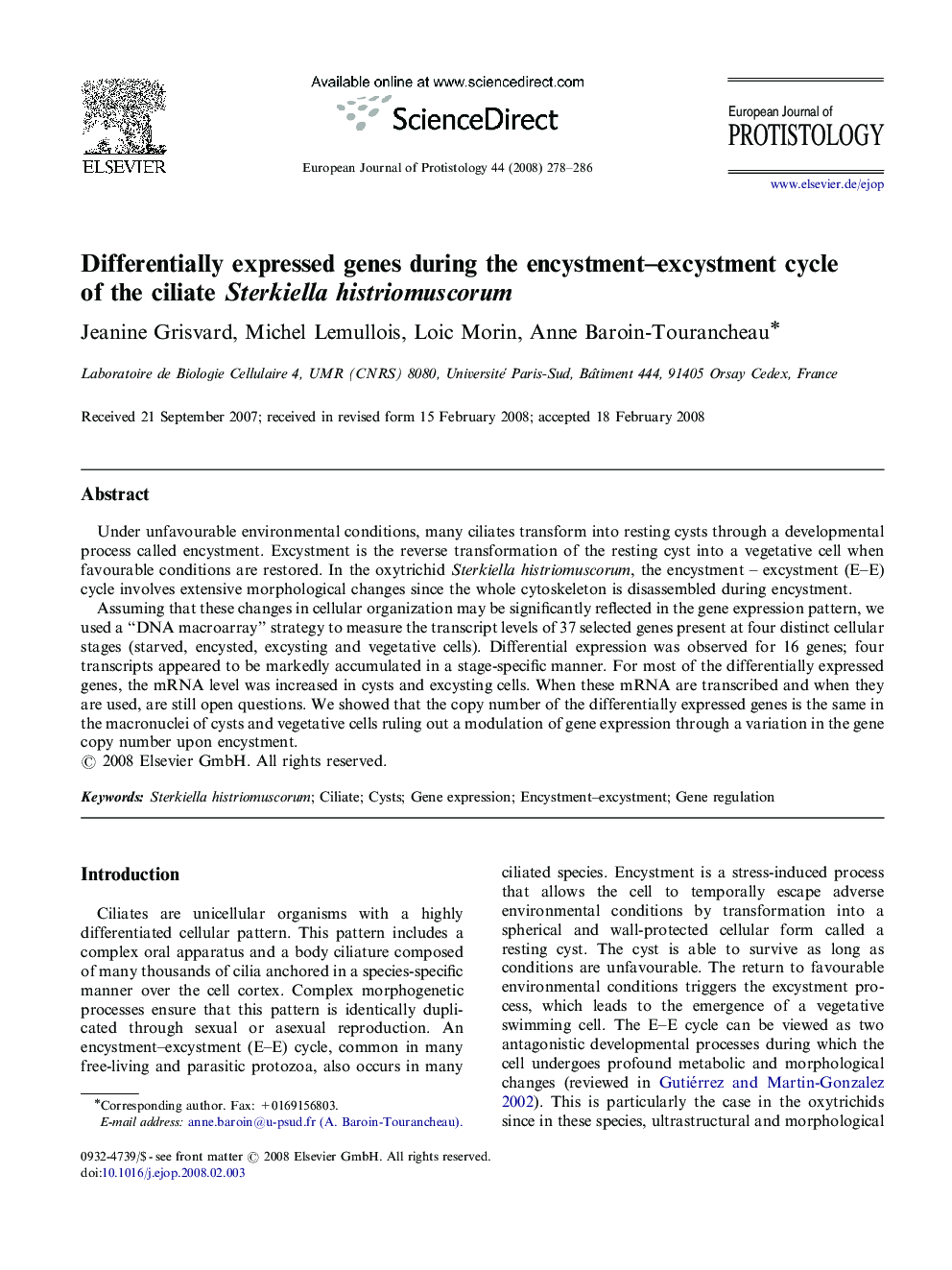| Article ID | Journal | Published Year | Pages | File Type |
|---|---|---|---|---|
| 2047350 | European Journal of Protistology | 2008 | 9 Pages |
Under unfavourable environmental conditions, many ciliates transform into resting cysts through a developmental process called encystment. Excystment is the reverse transformation of the resting cyst into a vegetative cell when favourable conditions are restored. In the oxytrichid Sterkiella histriomuscorum, the encystment – excystment (E–E) cycle involves extensive morphological changes since the whole cytoskeleton is disassembled during encystment.Assuming that these changes in cellular organization may be significantly reflected in the gene expression pattern, we used a “DNA macroarray” strategy to measure the transcript levels of 37 selected genes present at four distinct cellular stages (starved, encysted, excysting and vegetative cells). Differential expression was observed for 16 genes; four transcripts appeared to be markedly accumulated in a stage-specific manner. For most of the differentially expressed genes, the mRNA level was increased in cysts and excysting cells. When these mRNA are transcribed and when they are used, are still open questions. We showed that the copy number of the differentially expressed genes is the same in the macronuclei of cysts and vegetative cells ruling out a modulation of gene expression through a variation in the gene copy number upon encystment.
